Papers by Dr. Shivaray Navi

Iowa State Press eBooks, Apr 14, 2008
ABSTRACT Viruses infecting sorghum are widely distributed in Asia and Africa and are of economic ... more ABSTRACT Viruses infecting sorghum are widely distributed in Asia and Africa and are of economic importance. In recent years, apparent virus disease incidence has increased, probably due to changes in agricultural practices associated with the introduction of hybrids and new varieties. A total of 23 viruses are known pathogens either in the field or following experimental transmission to sorghum. Of these 23, five are economically important: sugarcane mosaic virus (SCMV), maize dwarf mosaic virus (MDMV), maize stripe virus (MStV), maize mosaic virus (MMV), and sorghum mosaic virus (SrMV). These viruses cause various symptoms including mosaic, chlorosis, streaks, stripes, reddening of leaves, stunting, delayed flowering, smaller heads, and quantitative and qualitative losses in grain and stover. Serological assays and biotechnological approaches using polyclonal or monoclonal antisera have been widely applied and can be used in developing countries for early diagnosis of viral diseases. Graminaceous native and weed grasses serve as virus refuges, and their vectors play a key role in virus disease epidemics. In some cases, virus spread is reduced by cultural practices that reduce vector populations or by applying insecticides mixed with oil early in the cropping season. The most economic and practical way to control sorghum viral diseases is with tolerant/resistant cultivars, but these are not always available in adapted hybrids or varieties. The genetic basis of resistance to virus diseases depends on host-virus-vector relationships.

Field Crops Research, Oct 1, 2003
Crop residues from groundnut and sorghum constitute important fodder resources for dairy producti... more Crop residues from groundnut and sorghum constitute important fodder resources for dairy production and fodder trading on the Deccan Plateau in India. This paper addresses the effect of important diseases of groundnut and sorghum on pod and grain yield and crop residue yield and quality. In four genotypes of groundnut, late leaf spot (Phaeoisasariopsis personata) and rust (Puccinia arachidis) are the two major foliar diseases that together could reduce pod and haulm yield by 70% and in vitro digestibility of haulms by 22%. Two genotypes (ICGV 9202 and 92093) were highly resistant to these foliar diseases maintaining high pod and haulm yield as well as high in vitro digestibility of haulms (>62.3%) even under highest disease pressure. Important diseases in sorghum investigated were a viral disease caused by maize stripe virus (MStV) and anthracnose caused by Colletotrichum graminicola. MStV reduced grain yield by 30%, stover yield by 42% and digestible stover yield by 45%. Effects of MStV were highly genotype-dependent and grain and stover were affected in different ways in different varieties. The choice of appropriate genotype for a given farming situation will depend on trade-off scenarios for benefits from grain and stover. Similarly, anthracnose could reduce grain yield by 47% and stover yield by 23% but effects on stover quality were variable. As observed for MStV, effects of anthracnose were highly genotype-dependent and genotypes were identified that maintained high grain and stover yield under high disease pressure.
Karnataka Journal of Agricultural Sciences, 2010
... on the upper surface of lower leaves results in prolific growth of sooty mould and blackening... more ... on the upper surface of lower leaves results in prolific growth of sooty mould and blackening of green foliage. Due to continuous sap sucking, the crop becomes stunted leading to loss in cane length, circumference, weight, juice yield and sugar content (Gupta and Goswami ...
Karnataka Journal of Agricultural Sciences, 2010
Journal of entomological research, 2006
Studies on the integration of eleven genotypes were evaluated with Nomuraea rileyi, neem seed ker... more Studies on the integration of eleven genotypes were evaluated with Nomuraea rileyi, neem seed kernal extract (NSKE) quinalphos spray for the management of Spodoptera litura. Quinalphos spray on variety Dh-53 gave highest yield and also reduced larval population and leaflet damage as compared to N. rileyi and NSKE. Quinalphos spray and varietal resistance indicated that significantly lower population and leaf let damage but significantly higher yield with variety Dh-53. Whereas, N. rileyi and NSKE were next best in getting higher yield (14.04 and 13.83 q/ha) with lesser leaflet damage as compared to control.
Journal of entomological research, 2011
Biotic potential of M. timidus on six aphid species viz., Ceratovacuna lanigera (Zehntner), Aphis... more Biotic potential of M. timidus on six aphid species viz., Ceratovacuna lanigera (Zehntner), Aphis craccivora (Koch), Aphis gossypii (Glover), Melanaphis sacchari (Zehntner), Uroleucon carthami Theo and Myzus nicotianae Blackman was studied. Developmental period from egg to adult was significantly shortest (18.05 days) on A.craccivora while longest on U. carthami (20.61 days). Eggs obtained from predator fed on U. carthami and M. nicotianae were incubated for longer period (4.38 and 4.37 days, respectively). Larvae grew at faster rate and completed larval and pupal stages on M. sacchari (6.52 days larval period and 7.56 days pupal period) and A.craccivora (6.68 days larval period and 7.26 days pupal period). Aphis gossypii and M. sacchari were highly preferred and showed more number of eggs production 794.53 and 793.75, respectively.
Field investigations were undertaken at Main Agriculture Research Station, Dharwad to study the e... more Field investigations were undertaken at Main Agriculture Research Station, Dharwad to study the effect of release of predator, Micromus timidus Hagen under cotton ecosystem against aphid, Aphis gossypii (Glover). Predator was released @ 1,3,5 pairs of adults and 5 eggs/plant. Release of 5 and 3 pairs of M. timidus adults reduced the aphid population to the tune of 67.23 and 40.62%, respectively at 25 days after release (DAR). Peak activity of M. timidus was recorded at 15 DAR by recording maximum number of eggs, larval and pupal stages in 5 and 3 pairs of adults release treatment and decreasing trend was noticed at 25 DAR.
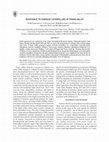
Indian Journal of Entomology
Field experiment was conducted at the Zonal Agricultural Research Station, Vishweshwaraiah Canal ... more Field experiment was conducted at the Zonal Agricultural Research Station, Vishweshwaraiah Canal Farm, Mandya during kharif 2018 and 2019, to assess the mechanism of resistance like earhead shape and colour of finger millet genotypes against earhead caterpillars viz., Cryptoblabes angustipennella (Hampson), Somena scintillans (Walker), Helicoverpa armigera (Hubner), Spodoptera frugiperda (J E Smith), Archips micaceana (Walker), Nola analis (Wileman and West), Cydia sp., Pyrausta phoenicealis (Walker), Corcyra cephalonica (Stainton) and Stathmopoda sp. Among the 230 genotypes screened against earhead caterpillars, droopy/lax and open earhead shape genotypes were completely free from the larval incidence. On the other hand, a large number of genotypes with purplish earheads showed a lower larval incidence (2.02 larvae/ earhead), indicating their higher level of resistance.
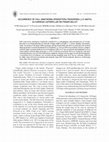
Indian Journal of Entomology
Fall Armyworm, Spodoptera frugiperda considered as a polyphagous and potential pest of cereals. R... more Fall Armyworm, Spodoptera frugiperda considered as a polyphagous and potential pest of cereals. Recently it was found infesting on earheads of finger millet at ZARS, V C Farm, Mandya, Karnataka, India. Screening of 230 finger millet genotypes during Kharif-2018 and 2019 revealed that, fist earhead shape genotypes recorded maximum level of incidence i.e. 0.15 to 0.50 larvae/earhead, whereas, compact earhead shape recorded moderate level of incidence 0.06 to 0.37 larvae/earhead and minimum level on semi-compact earhead shape genotypes i.e. 0.01 to 0.20 larvae/earhead. However, droopy/lax and open earhead genotypes were free from infestation completely. During various stages of earhead development, A maximum level of incidence was recorded during doughing stage (0.23 larvae/ earhead), followed by milky stage (0.16 larvae/earhead) and maturity stage (0.07 larvae/earhead). However, at flowering stage, there was no incidence.

Indian Journal of Pure & Applied Biosciences
The experiment was conducted during kharif season of 2019 at All India Co-ordinated Research Proj... more The experiment was conducted during kharif season of 2019 at All India Co-ordinated Research Project on Sorghum, Krishi Vigyan Kendra, Chamarajanagar District, Karnataka. To evaluate the sorghum based legume intercropping system. The experiment consists of fourteen treatment combination with different legumes viz.,Redgram, Greengram, Blackgram, Cowpea and Field bean in different row ratio of 2:1, 4:1 and 4:2. It was laidout in Randomized Complete Block Design and replicated thrice. The results revealed that there was significant increase in sorghum grain yield (1593 kg/ha), Land equivalent ratio (1.35) and Area Time Equivalent ratio(1.32) with sorghum+blackgram(4:2). While higher gross returns (Rs. 44,213 ha), net returns(Rs. 27,434 ha) and Benefit: Cost ratio (2.64) was found with sorghum + green gram(4:2). Increase in Sorghum Equivalent Yield (2,544 kg/ha) was recorded with sorghum+redgram(2:1). From the results it was confirmed that sorghum+ blackgram or sorghum+green gram in 4: 2 row proportion was better in terms of yield and economics compared to the other treatments.
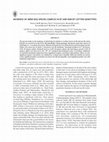
Indian Journal of Entomology
The present study on the incidence of mirid bugs in relation to weather factors in Bt and non Bt ... more The present study on the incidence of mirid bugs in relation to weather factors in Bt and non Bt cotton hybrids was carried out at the KVK, Haradanahalli, Chamarajanagar. During the study three species of mirid bugs viz., Creontiades biseratense (Distant), Helopeltis theivora (Waterhouse) and Taylorilygus apicalis (Fiber) were observed, of which C. biseratense was the dominant. Maximum incidence of C. biseratense (6.56/ 10 squares/ plant), Helopeltis theivora (3.60/ 10 squares/plant) and Taylorilygus apicalis (2.40/ 10 squares/ plant) was observed at 42nd, 45th, 43rd standard meteorological weeks. Correlation coefficients revealed that maximum temperature has a significant negative association with incidence. However, non-significant negative association was exhibited by evening relative humidity (RH) and rainfall. In contrast to this, significant positive association was observed with morning RH, a non-significant positive one with minimum temperature.
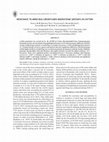
Indian Journal of Entomology
A field experiment was carried out in the AICRP on Cotton, Haradanahalli Farm, Chamarajanagar, Ka... more A field experiment was carried out in the AICRP on Cotton, Haradanahalli Farm, Chamarajanagar, Karnataka to know the association of morphological characters of 15 cotton genotypes (different resistance category) influencing resistance to mirid bug, Creontiades biseratense. Cotton morphological parameters viz., trichome density on leaves, squares and midvein showed a significance difference with the genotypes and the higher incidence of mirid bug was recorded on genotypes having more trichome density. Similarly, genotypes having higher boll rind thickness and length of petiole recorded the higher incidence. of C. biseratense. There was a significant positive correlation between C. biseratense incidence and trichomes on leaves (r = 0.90**), trichomes on squares (r = 0.89**), trichomes on midvein (r = 0.91**), boll rind thickness (0.80**) and length of petiole (r = 0.60*). However thickness of leaf showed the non-significant negative difference among the genotypes (r = -0.03).
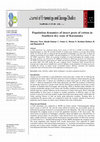
Journal of entomology and zoology studies, 2021
A field experiment was conducted during kharif season of 2019-20 at AICRP on Cotton scheme, Chama... more A field experiment was conducted during kharif season of 2019-20 at AICRP on Cotton scheme, Chamarajanagara, to study the seasonal variation of sucking pests incidence in non Bt cotton hybrid (DCH-32). From the data it is observed that the population of leafhopper was above ETL in almost all standard meteorological week (SMW) with peak population of 7.20 and 6.80/3 leaves during 35 th and 36 th SMW, respectively. While, the occurrence of aphids was noticed throughout the cropping season. The peak incidence was observed at 36 th SMW (55.15/3leaves). Mirid bug incidence was started from 35 th SMW and attained its peak during 42 nd SMW and declined thereafter. The population of whiteflies and thrips didn't cross ETL during the entire cropping season. Correlation study revealed that the morning and evening relative humidity had a positive influence on the population of sucking insect pests including the activity of natural enemy (coccinellid beetles). Whereas, maximum and minimum temperature had a detrimental effect on the population of sucking insect pests.
Journal of Pharmacognosy and Phytochemistry, 2019
The experiment was conducted at AICRP (Sorghum), KVK, Chamarajanagar, Karnataka. During kharif se... more The experiment was conducted at AICRP (Sorghum), KVK, Chamarajanagar, Karnataka. During kharif seasons of 2017-18 and 2018-19. The experiment consist of three different sowing intervals and four genotypes laid out in split plot design replicated thrice. First fortnight of may sowing among different intervals of sowing and with respect to genotypes CSH-30 recorded the highest grain yield and other growth components.
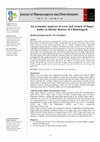
Journal of Pharmacognosy and Phytochemistry, 2020
The present study was focused to investigate the “economic analysis of production of finger mille... more The present study was focused to investigate the “economic analysis of production of finger millet in Bastar district of Chhattisgarh state of India.’’ Chhattisgarh state consists of 28 districts out of which Bastar district had been selected purposively. out of 7 blocksi (Jagdalpur, Bastar, Bakawand, Lohandiguda, Tokapal, Bastanar & Darbha) from Bastar district only one third of the total blocks i.e., Lohandiguda & Bastanar blocks were selected purposively on the basis of maximum area under selected minor millets for the purpose of the study subsequently, four villages namely Mardum, Matnaar, Kilepal and Turangur were selected for the study. Thus the total sample size was 97 for finger millet growers. Primary data was collected through personal interview method with the help of pre-tested questionnaire. The major findings of the study revealed that compound growth rate in finger millet for area, production and productivity shows significant growth. It was calculated that commercial...

International Journal of Chemical Studies, 2018
Chickpea, (Cicer arientinum L) is an important pulse crop is being cultivated in Chamarajanagar d... more Chickpea, (Cicer arientinum L) is an important pulse crop is being cultivated in Chamarajanagar district of Karnataka state during rabi season. The main biotic constraint in the production of this crop is pod borer incidence which causes severe losses. To curtail this problem, Front Line Demonstration (FLD) on Integrated Pest management was conducted with farmers participation (80 farmers) during rabiseason of 2015-16 and 2017-18. Results indicated that lowest number of larvae (1.96/m row) and minimum Percent pod damage (6.57%) was recorded in FLD plot as compared to check plot. The Average technology gap, extension gap and technology index were 9.35 q/ha, 1.75 q/ha and 49.20 percent, respectively. FLD plots recorded highest yield (9.65 q/ha) with higher net profit of Rs 23955.50/ha and benefit cost ratio of 2.10 as against farmers practice
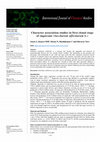
International Journal of Chemical Studies, 2020
Statistical correlation coefficient is a measure that denotes the magnitude and direction of inte... more Statistical correlation coefficient is a measure that denotes the magnitude and direction of interrelationship between any two casually related variables. The information on the genotypic and phenotypic interrelationship of cane yield and sugar yield with their component characters interest would be of immense help to the sugarcane breeder. The character association will also help in the selection of superior genotypes from divergent population based on more than one interrelated characters. However, correlation coefficients, sometimes, may be misleading and thus, need to be partitioned into direct and indirect effects. It is important for a breeder to know how other characters influence a particular character before selecting the parental material for crossing purposes. Path coefficient analysis provides direct and indirect effects of component characters thereby enhancing the better understanding of true relationship of the component characters with yield.
Journal of entomology and zoology studies, 2017
A field experiment was conducted at AICRP on Cotton KVK, Chamarajnagar, UAS, Bangalore, during 20... more A field experiment was conducted at AICRP on Cotton KVK, Chamarajnagar, UAS, Bangalore, during 2016-17 to assess the efficacy of different combination insecticides. Totally 3 sprays were taken up at 40, 80 and 120 days after sowing using manually operated knapsack sprayer. The mean of three sprays indicated that, application of Spinetoram 10% w/w + Sulfoxaflor 30% w/w WG @ 140 g ai/ha recorded a lower number of whiteflies per leaf (0.41) and Leaf hopper (0.48). Whereas the lower number of aphids per leaf (1.71) and thrips (0.77) were recorded in the application of Sulfoxaflor 30% @ 108 gai/ha. While untreated control recorded the higher number of thrips (13.22), leaf hopper (3.71), whiteflies (2.88) and aphids (36.33) per leaf. The incidence of bollworm was lowest in Spinetoram 10% w/w @ 36 g ai/ha.
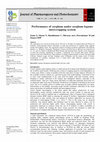
Journal of Pharmacognosy and Phytochemistry, 2020
The experiment was carried out during kharif, 2019-20 at All India Co-ordinated Research Project ... more The experiment was carried out during kharif, 2019-20 at All India Co-ordinated Research Project on Sorghum, Chamarajanagar District, Karnataka, to study the performance of sorghum under sorghum legume intercropping system. The experiment consists of fourteen treatment combination with different legumes viz., Redgram, Greengram, Blackgram, Cowpea and Field bean in different row proportion of 2:1, 4:1 and 4:2, laidout in Randomized Block Design and replicated thrice. Results of the experiment revealed that treatment combination of sorghum + blackgram (4:2) recorded taller plants (295cm), Increase in leaf area (4760.59cm2), Stem diameter (15.24mm), Earhead length (13.83cm), Ear head width (5.50cm), Earhead weight (61.50g), Sorghum yield (1593kg/ha) and dry fodder yield (13.51t/ha). Combination of sorghum+ blackgram (4:2) is found better under different sorghum+ legume intercropping systems.
Journal of Pharmacognosy and Phytochemistry, 2020
Understanding of various genetic parameters that govern a population under improvement is essenti... more Understanding of various genetic parameters that govern a population under improvement is essential for proper planning and direction of plant breeding programme. Genetic variability and heritability are useful parameters that can help the breeding during different stages of crop improvement. The success of such programme will largely depend on the extents of genetic variability available in the base population and heritability of the characters under improvement. Therefore, a clear understanding of genetic parameters is of paramount importance to develop a breeding strategy. Genetic variability accumulated and conserved in the form of diverse plant types is immediately valuable for shaping new varieties. This forms the basic genetic wealth on which plant breeders could operate for reconstructing the existing genotypes.











Uploads
Papers by Dr. Shivaray Navi